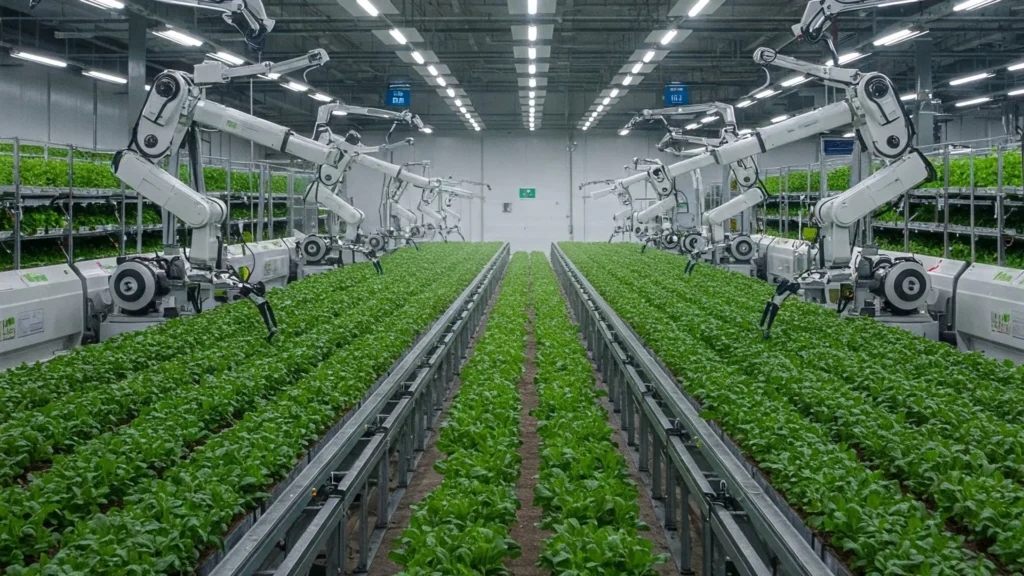Introduction
Agriculture, one of the oldest vocations in the world, is facing a techno-savvy makeover. Bots are presently planting seeds, harvesting fruits, and tracking crops with accuracy, lessening labour gaps and optimizing productivity. Be it self-governing tractors or computer-programmed harvesters, robotics in farming is largely transforming agriculture.
This blog post discusses the role of Robot started Farming, advantages, setbacks, and future of automated agriculture.
How Robots Are Revolutionizing Farming

1. Self-Guided Tractors & Planters
Kubota and John Deere have come up with self-driven tractors powered by GPS and AI that plow, plant seeds, and fertilize farms with accuracy as precise as millimeters.
Advantages: Saves fuel wastage, seed placement optimization, and 24/7 operation.
2. Robotic Pickers
Robotic harvesters (e.g., Agrobot, Harvest CROO) utilize robotic arms and computer vision to spot mature produce and carefully pick them.
Applied for: Strawberries, apples, tomatoes, and grapes.
3. Crop Monitoring by Drones
Agricultural drones equipped with multispectral cameras scan fields to detect pests, diseases, and irrigation needs.
Example: DJI’s Agras drones spray pesticides with precision.
4. Weeding & Pest Control Robots
AI-powered weeders (like Farm Wise and Carbon Robotics) use machine learning to distinguish crops from weeds and eliminate them without chemicals.
5. Indoor & Vertical Farming Robots
Iron Ox and Plenty employ robotic arms and automated systems to control hydroponic farms, providing the perfect conditions for growth.
Advantages of Robot Farming
- Improved Efficiency – Robots can work longer and faster than humans.
- Less Labor Shortages – Reverses the shortage of farm workers.
- Precision Farming – Lowers the waste of seeds, water, and pesticides.
- Improved Crop Yields – AI maximizes growing conditions.
- Sustainable Agriculture – Reduces chemical use and carbon footprint.
Limitations of Robot Farming
- High Upfront Expenses – Advanced robots are capital-intensive.
- Technological Maintenance – Farmers require training to use sophisticated machinery.
- Poor Adaptability – Some robots fail with non-conventional crop planting patterns.
- Hacking Risks to Data – AI systems must be kept safe from hackers.
The Future of Robot Agriculture
- Swarm Robotics – Little robots acting collectively like bees.
- AI-Driven Predictive Farming – Robots predicting weather and disease threats.
- Autonomous Farms – No need for human interference.
- Robots for Small Farms – Cost-effective automation for family farms.
Conclusion
Robot started farming is not longer science fiction it’s the future. Although there are still challenges, the advantages of greater efficiency, sustainability, and precision make robot farming a certainty. With developing technology, we could soon witness fully autonomous farms supplying the world.

